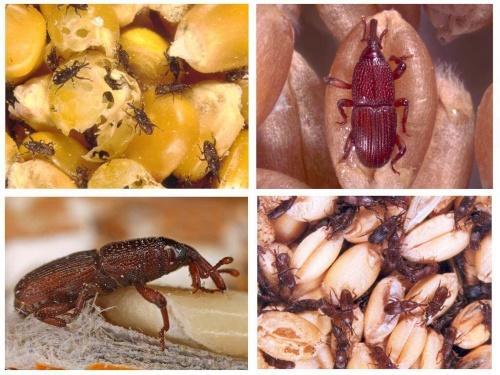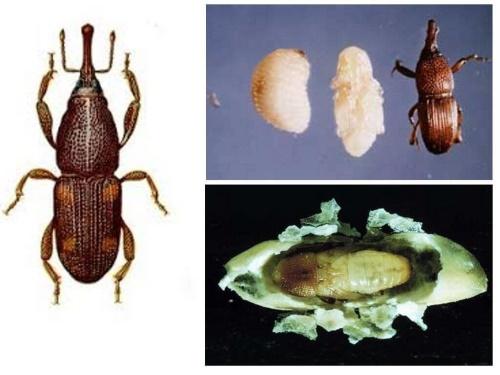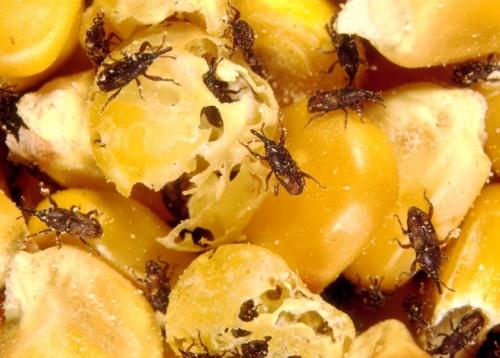How to process grain from weevils and save the harvest
 In agriculture, losses from damage by weevils account for up to 30% of the crop. The question of how to process grain from a weevil always remains relevant, because it is one of the most dangerous pests. Small bugs hide in secluded corners of the warehouse and begin to actively multiply during the warm season. During the winter, they destroy wheat, barley, corn, buckwheat and other grain crops. Moreover, it is impossible to notice insects, because weevils develop and grow inside the grains themselves. Why are they dangerous, and how to preserve the harvest?
In agriculture, losses from damage by weevils account for up to 30% of the crop. The question of how to process grain from a weevil always remains relevant, because it is one of the most dangerous pests. Small bugs hide in secluded corners of the warehouse and begin to actively multiply during the warm season. During the winter, they destroy wheat, barley, corn, buckwheat and other grain crops. Moreover, it is impossible to notice insects, because weevils develop and grow inside the grains themselves. Why are they dangerous, and how to preserve the harvest?
"Harmful properties" of weevil

Weevils differ in that they can adapt to conditions. They need warmth to develop, but when the temperature drops, they simply hibernate. As soon as it gets warmer, the larvae continue to develop again. Pests can die only if the temperature in the storage drops below 5 ° frost.
Is it possible to get rid of the pest without the use of chemicals
 If the pests have not yet managed to infect most of the grain, you can try to carry out the following measures:
If the pests have not yet managed to infect most of the grain, you can try to carry out the following measures:
- In winter, in dry weather, ventilate the warehouses so that the room temperature drops to -10 ° C, controlling the humidity.
- Sift the grain on a sieve or move it with aspiration preparations.
How to process grain from a weevil
 Whatever they say, but chemical treatment remains one of the most effective ways to combat weevils. It is carried out by special organizations by processing grain and premises with certain preparations. Most often, two methods of disinfection are used:
Whatever they say, but chemical treatment remains one of the most effective ways to combat weevils. It is carried out by special organizations by processing grain and premises with certain preparations. Most often, two methods of disinfection are used:
- Aerosol. It consists in spraying the premises with insecticides such as Karate, Actellik, Fufanon, Arrivo.
- Gas. Special tablets are placed in the grain that neutralize pests, or they are fumigated with gas. Alfos, Fostoksin, Foskom, Magtoksin are used against the weevil.
Aerosol disinfection is more suitable for grain intended for sowing the next season. The crop processed in this way cannot be sold for a long time, but it will be well preserved until spring.